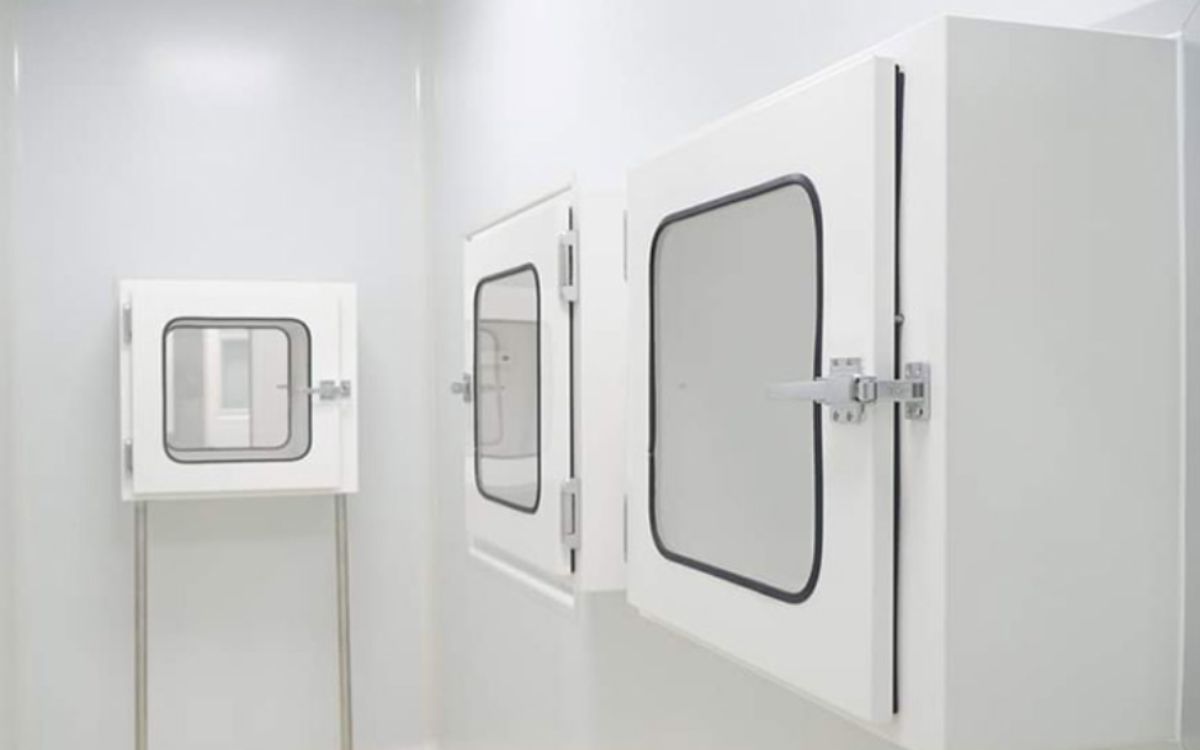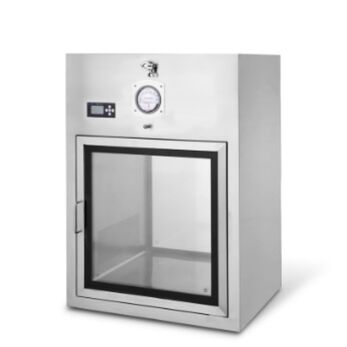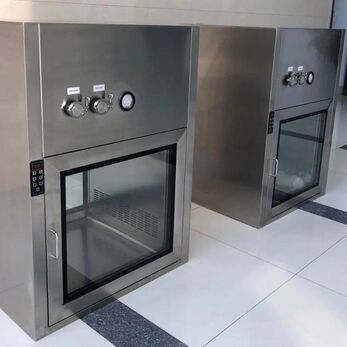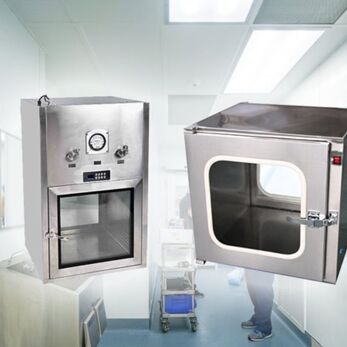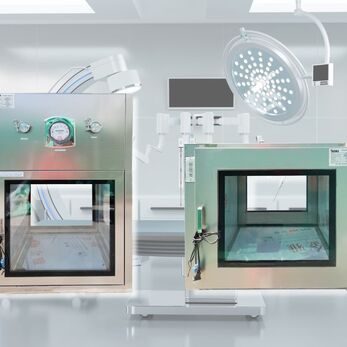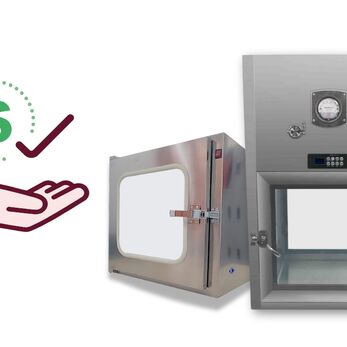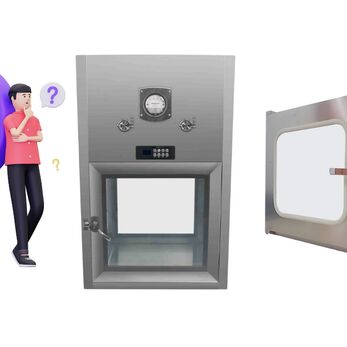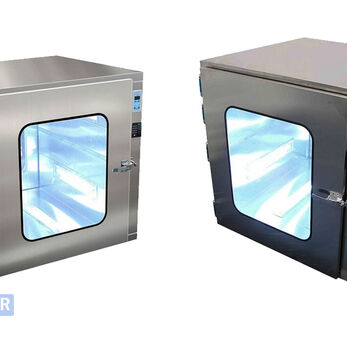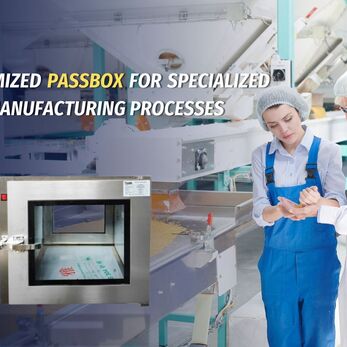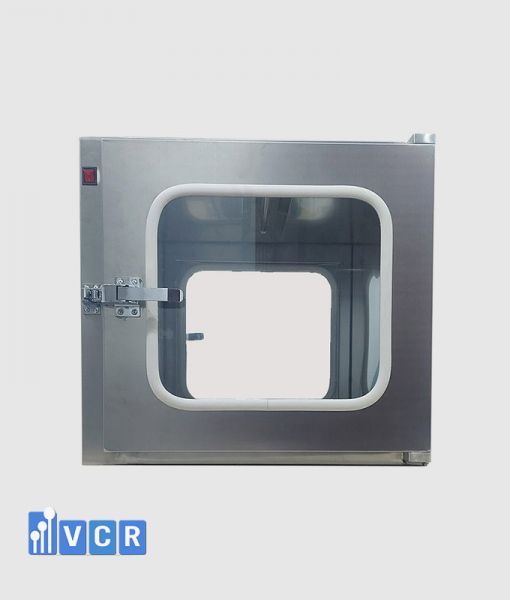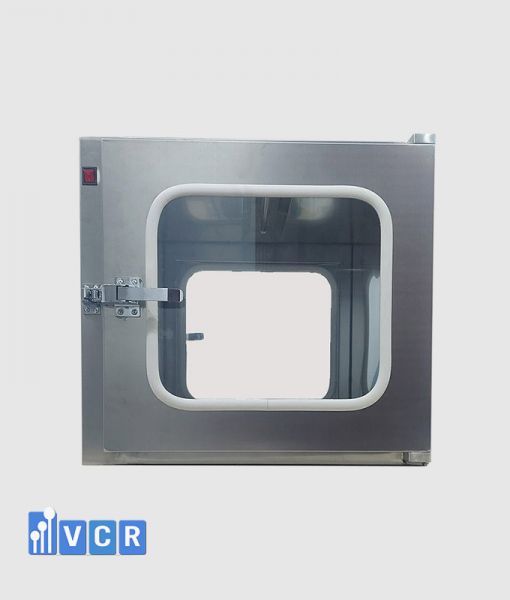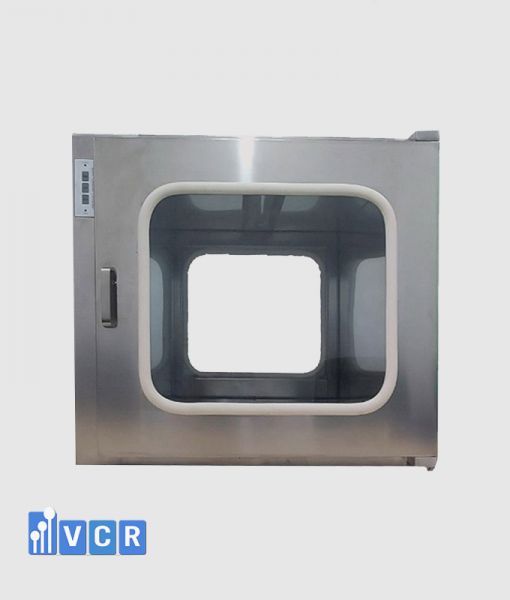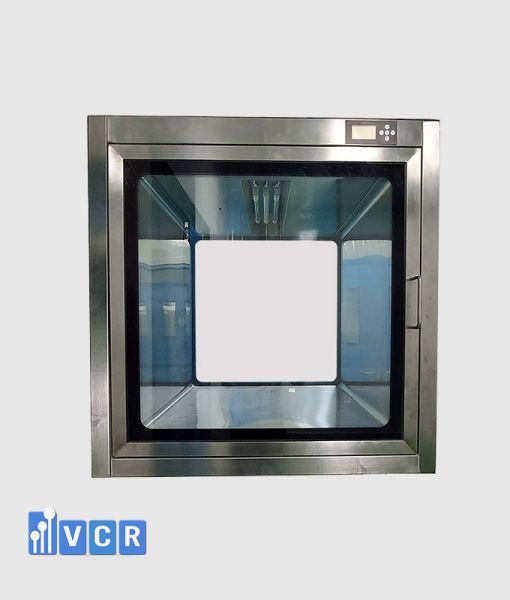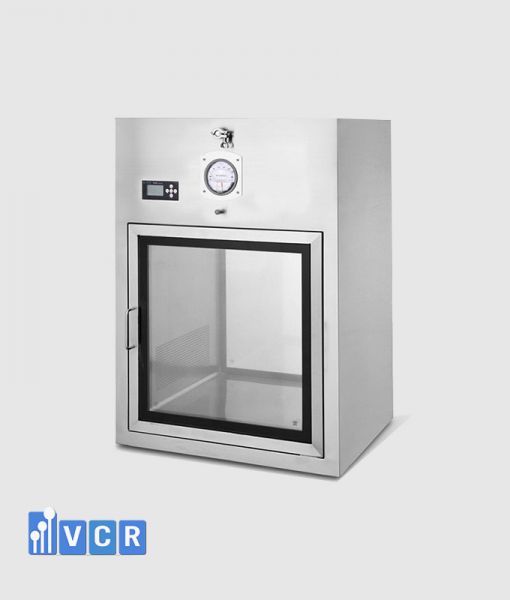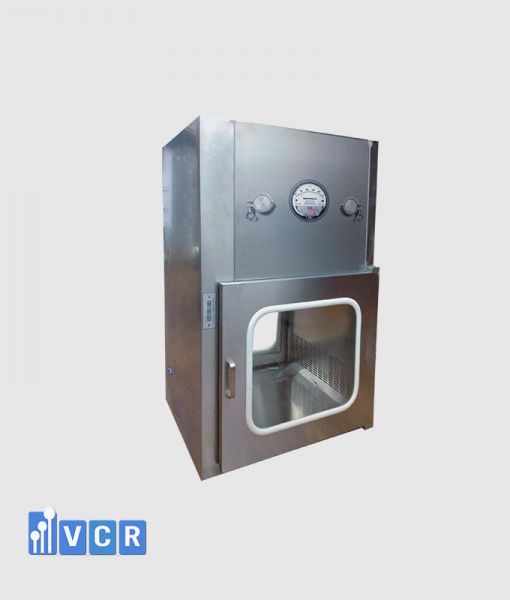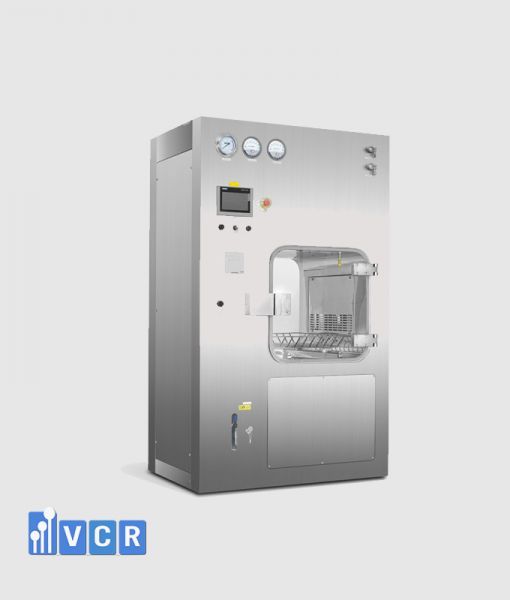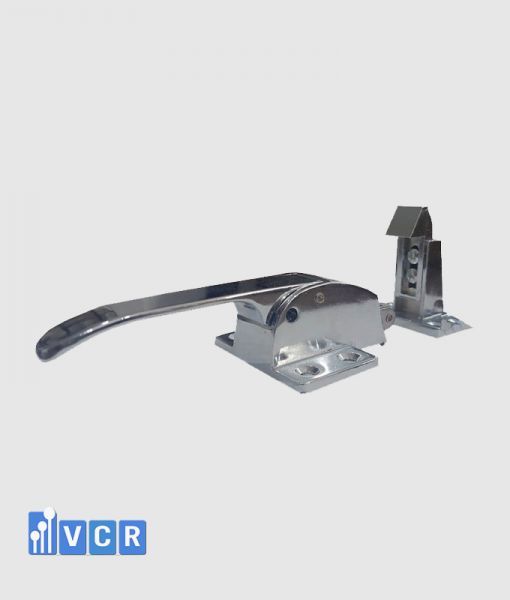A pass box is an important piece of equipment in cleanroom operations, but if installed incorrectly it can lead to cross-contamination, loss of clean airflow control and failure to meet GMP standards. This article points out the most common mistakes when installing a pass box and offers effective corrective measures for each industry.
- I. Installing in the wrong clean-zone location
- II. Lack of connection to the HVAC system
- III. Not using an interlock door system
- IV. Ignoring periodic testing and maintenance
- V. Choosing the wrong type of Pass Box for the industry
- VI. How to choose and correctly install a Pass Box
- FAQ – Answers to common questions
I. Installing in the wrong clean-zone location
In clean room design and operation, the pass box acts as an intermediary to transfer items between areas with different cleanliness levels. However, one common Pass Box installation mistake many factories make is placing the pass box between two zones with too large a cleanliness difference — for example: from ISO Class 5 to ISO Class 8.
Consequences of incorrect positioning:
-
Cross-contamination: When the pass box links two environments with large differences in cleanliness, pressure and microbial control, dust particles and bacteria from the dirtier zone may migrate into the cleaner zone.
-
Imbalance in clean airflow: A large pressure difference causes “reverse leakage” through gaps and doors of the pass box, which disrupts the HVAC system control.
-
Violation of GMP/ISO 14644 standards: Some strict standards state that items should only move through zones with a smooth transition in cleanliness level in order to maintain product quality and safety.
Remedies:
-
Always ensure the pass box connects adjacent cleanliness levels, e.g. ISO 8 ↔ ISO 7 or ISO 7 ↔ ISO 6.
-
If it is necessary to connect two zones with a large differential, arrange a buffer room or use a pass box integrated with a HEPA filter and forced-air fan to control airflow and avoid cross-contamination.
-
Perform careful design for airflow, pressure differential and installation position from the clean room layout stage to limit technical errors during implementation.
Industry-specific notes:
-
Pharmaceutical industry: Must adhere strictly to the “one-direction flow” principle and avoid installing the pass box between a compounding area (ISO 5) and a packaging area (ISO 8).
-
Food – Cosmetics industries: Avoid using the same pass box for raw materials area and finished products area.
-
Electronics industry: The ESD (electrostatic discharge) and clean zoning must be clearly defined; the pass box should only link zones with equivalent ESD handling.
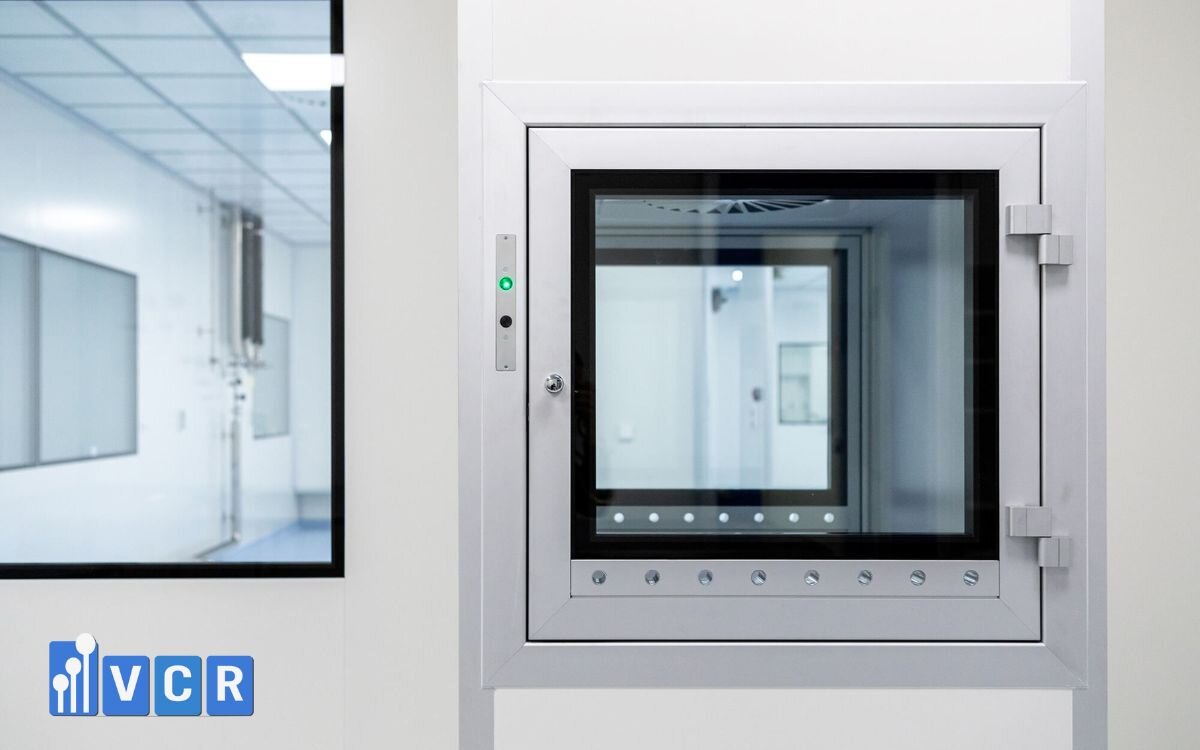
Read more: Latest price list of Passbox used in electronics factory
II. Lack of connection to the HVAC system
A pass box is a material-transfer device in a clean room and requires air inside to be strictly controlled so as to avoid dust build-up, microbes or pollutants. Yet many factories do not connect the pass box to the HVAC or AHU (Air Handling Unit), causing the device to operate inefficiently and posing contamination risks.
Consequences of not connecting to HVAC:
-
The air in the chamber is not cleaned: without a supply of clean or recirculated air, the pass box chamber becomes a “dead zone” where dust, humidity or microorganisms can accumulate.
-
Increased risk of cross-contamination: Items placed in the pass box may carry impurities into the clean zone if the air is not properly “cleaned”.
-
Loss of pressure control: Without HVAC connection, the pressure differential between the two rooms may be adversely affected, leading to leaks of contaminated air.
Technical recommendations:
-
Integrate a HEPA-filtered fan within the pass box: Recirculating pass boxes continuously clean the air in the chamber using a HEPA filter, maintaining cleanliness to ISO Class 5–7 depending on requirements.
-
Connect directly to the HVAC/AHU system:
-
Supply controlled fresh air from the AHU to maintain positive pressure and continuous cleaning inside the pass box.
-
In central HVAC systems, design dedicated air supply/exhaust branches for each pass box per the clean room layout.
-
Industry-specific notes:
-
Pharmaceutical: Prioritize pass boxes with HEPA and UV, and connect recirculating with AHU following one-way airflow.
-
Food – Cosmetics: Connect to fresh air to limit odors, humidity and microbes, safeguarding product quality.
-
Electronics: Use pass boxes with ULPA filter and electrostatic control system plus deep-cleaned air.
Suggestions when choosing a pass box:
Minimum requirements:
-
Filter rating: HEPA H14 or higher.
-
Air-flow velocity: ≥ 0.45 m/s.
-
Noise level: < 65 dB.
-
Operation mode: closed-loop recirculation or one-way clean air supply.
Read more: Customized Passbox for Specialized Food Manufacturing Processes
III. Not using an interlock door system
One of the key principles in clean room operation is strict control of door openings, especially at interface points such as pass boxes. However, many factories install a clean room pass box but allow both doors to operate independently without an interlock mechanism, leading to serious operational risks.
Risks of missing interlock:
-
Loss of clean room pressure: If both doors are opened simultaneously, air can flow directly between the two areas, breaking the required pressure differential (typically 10–15 Pa), leading to air leakage and contamination backflow.
-
Entry of impurities and microbes: Opening both doors at once allows dust, humidity or pollutants from the lower-cleanliness zone to flow into the higher-cleanliness zone, compromising the controlled environment.
-
Violation of GMP / ISO 14644 standards: These standards require mechanisms to prevent uncontrolled air flow between functional zones.
Solutions – Application of door interlock system:
-
Use electronic interlock:
-
One door can open only when the other has fully closed and its lock engaged.
-
Some advanced models feature LED or alarm notification if incorrect operation occurs.
-
-
Use mechanical interlock:
-
Simpler system, suitable for lower budgets, still ensures “only one door open at a time”.
-
Suitable for traditional pass boxes that do not require mains power.
-
Purchase suggestions:
Technical factors
-
Interlock type: Electronic (sensor-relay) or mechanical (latch)
-
Warning: LED indicator for door status (Open / Locked)
-
Test system: Interlock test button for periodic maintenance
-
Expansion features: BMS integration, RFID access control
Application in industries:
-
Pharma – Electronics: Electronic interlock is mandatory to ensure Class 100–1000 cleanliness.
-
Food – Cosmetics: Mechanical interlock may be used when cleanliness is lower (ISO 7–8), but regular checking is still required.
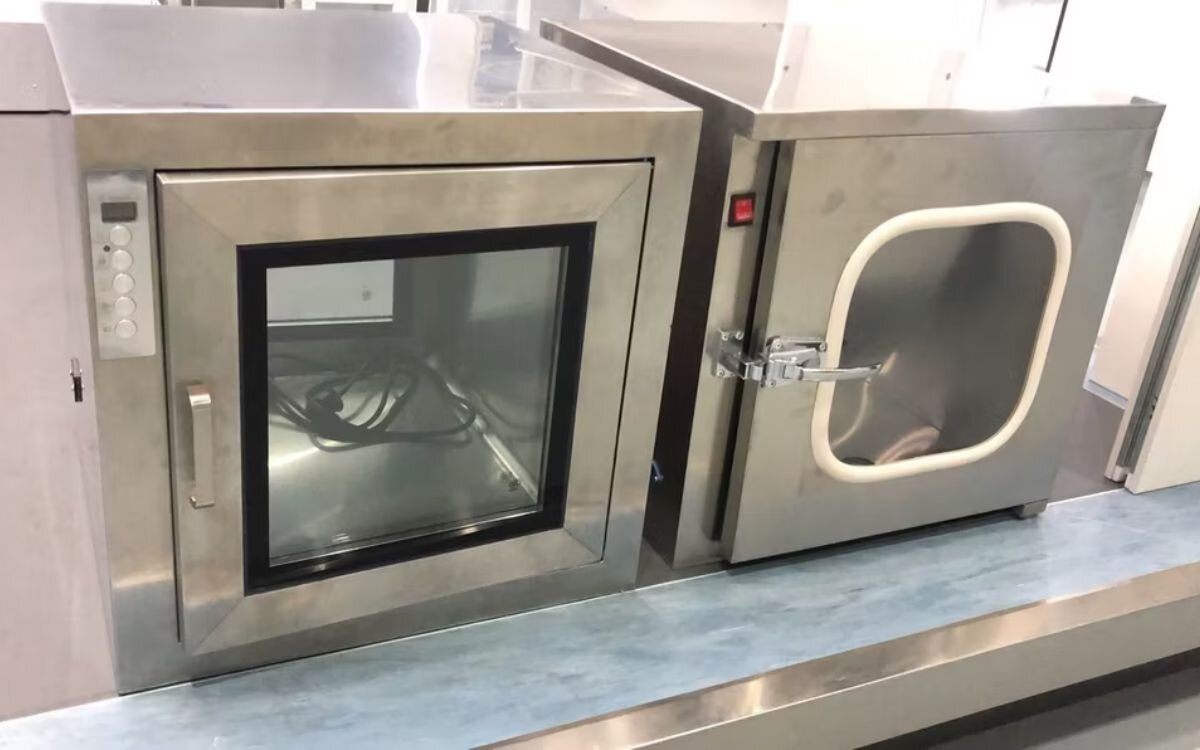
Read more: Pass Box Maintenance in Hospital Cleanrooms: Ensuring Sterility and Longevity
IV. Ignoring periodic testing and maintenance
Many factories focus only on installing the correct equipment but then neglect periodic testing and maintenance, especially for important devices like pass boxes. Over time, components such as HEPA filters, door gaskets, UV lamps or interlock mechanisms may degrade, directly affecting cleaning performance and airtightness.
Consequences of skipping testing/maintenance:
-
Reduced filtration performance: A clogged or damaged HEPA filter may no longer remove fine dust particles and microorganisms, compromising the cleanliness of the environment.
-
Loss of airtightness: Rubber gaskets degrade over time leading to air leakage, making it impossible to maintain clean room pressure.
-
Risk of sudden failure: Interlock system, fans, UV lamps may cease functioning if not regularly inspected and cleaned.
-
Failure to meet periodic inspection requirements of GMP/ISO: Clean rooms may fail internal audits or regulatory inspections.
Maintenance/testing recommendations:
-
Establish a periodic maintenance schedule by item:
-
HEPA filter: Check differential pressure & replace every 6–12 months.
-
Door gaskets: Check elasticity and air-leak every quarter.
-
UV lamps: Replace after 8,000 hours of operation or per manufacturer guidelines.
-
Filter fan: Clean pre-filters, check noise & vibration monthly.
-
-
Perform performance testing according to ISO 14644 or GMP standard:
-
Check air cleanliness in the pass box chamber.
-
Measure air-flow velocity at the clean-air discharge.
-
Test air-leakage and airtightness using smoke or differential pressure methods.
-
Sample proposed maintenance schedule:
| Item | Inspection Frequency | Notes |
|---|---|---|
| HEPA Filter | Every 6–12 months | Measure differential pressure (Pa) |
| Door Gasket | Every 3 months | Inspect air-leak using light or test paper |
| UV Lamp | Every 12 months | Replace bulb according to manufacturer |
| Fan / Filter Pre- | Monthly | Clean pre-filter, check noise & vibration |
Read more: Supplier of Food‑Grade Cleanroom Pass Boxes Meeting ISO 22000 Standard
V. Choosing the wrong type of Pass Box for the industry
Not all pass boxes are suitable for all industries. A common mistake when investing in clean-room equipment is choosing the wrong type of pass box — one that fails to meet technical requirements, cleanliness level or the specific nature of the product in each field. This can lead to cross-contamination, product damage, or even failure to meet GMP or ISO audits.
Consequences of choosing the wrong type:
-
The device fails to guarantee cleaning performance, causing microbial or particulate contamination.
-
Inadequate ESD control in electronics manufacturing.
-
Materials not suited for high-humidity or chemical environments degrade or corrode quickly.
-
Clean room certification is refused or fails internal inspection.
Suggested Pass Box types per industry:
| Industry | Appropriate Pass Box Type | Required Technical Features |
|---|---|---|
| Pharmaceuticals | Pass Box with HEPA filter and UV lamp | Particulate ≥ 0.3 µm, microbial kill; 304/316L stainless |
| Food | 304 stainless Pass Box, corrosion-proof, easy cleaning | Microbial control; avoid UV; easy chemical cleaning |
| Electronics | ESD-resistant Pass Box (ESD Pass Box) | Anti-ESD coating, grounding system, non-static materials |
| Cosmetics | Pass Box with air-filtering and dust-prevention | High cleanliness, dust control, protect sensitive products |
Criteria when selecting a Pass Box by industry:
-
Required cleanliness level (ISO Class 5 to ISO Class 8)
-
Product characteristics: sensitive to static, microbes or dust?
-
Usage frequency: For continuous operation, choose a type with HEPA filter and fan for durability.
-
Audit & certification requirements: Some industries require pass boxes with HEPA filter certification or ESD protection.
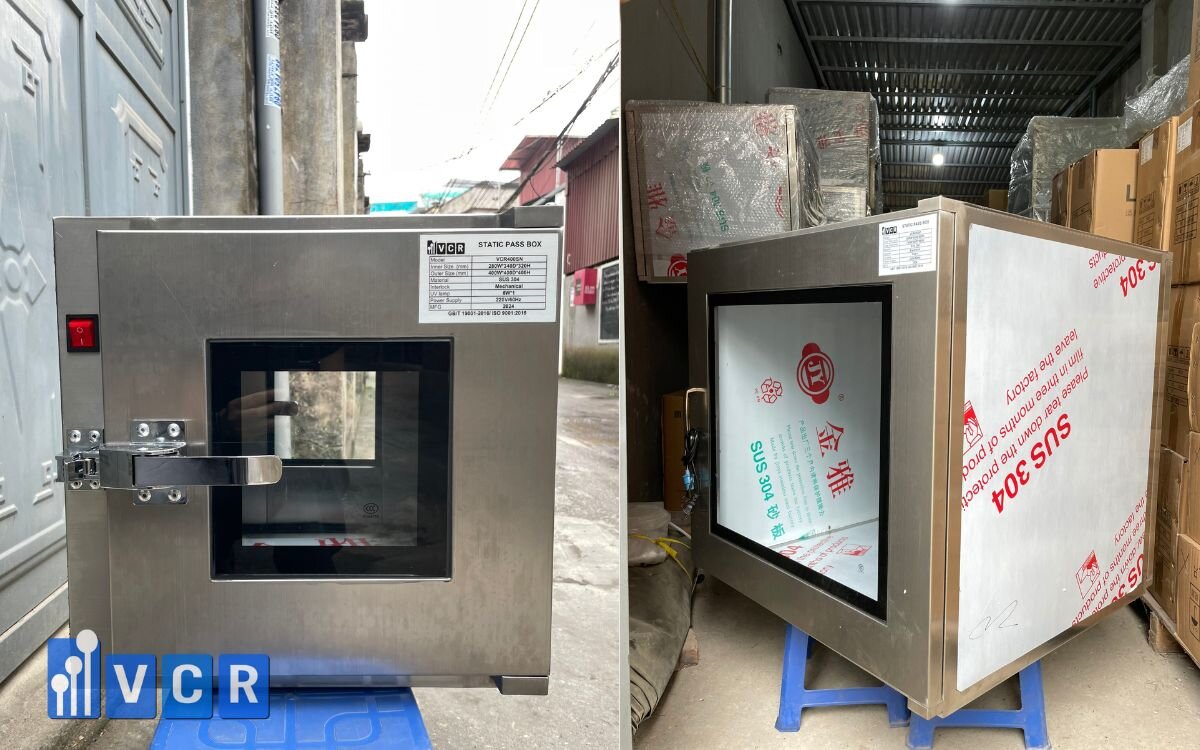
Read more: Periodic cleaning and maintenance process of Pass Box
VI. How to choose and correctly install a Pass Box
To ensure a pass box functions effectively and meets clean-room standards, selecting the right device and installing it correctly are key factors. Below are important steps you must follow to ensure the pass box fully serves as a clean transfer interface between zones.
1. Measure the cleanliness level of both connected zones
-
Before selecting the pass box, determine the exact ISO cleanliness class of both rooms to be connected (e.g., ISO 8 ↔ ISO 7).
-
Avoid using a pass box to connect two zones with a large difference in cleanliness level, due to high cross-contamination risk.
-
For high-cleanliness zones (ISO 5–6), choose a pass box with HEPA filter and air recirculation system.
2. Check airflow direction and differential pressure
-
Design one-way airflow from the cleaner zone to the less-clean zone to avoid reverse transfer of contaminants.
-
Ensure a standard differential pressure of 10–15 Pa between the zones to avoid flow reversal when the door opens.
-
If airflow control is not adequate, choose a pass box with integrated fan and HEPA filter.
3. Prefer a pass box with upgradeable filter and UV
-
In production environments subject to change (expansions, higher ISO requirements), choose a pass box designed modularly, easy to upgrade the filter, add UV or add sensors.
-
Upgradeable pass boxes help save cost when adjusting room configurations without replacing the entire device.
4. Design the location of the pass box for convenient operation and not obstructing movement
-
The pass box should be placed at the interface between two clean rooms, near the main working area but not blocking key movement paths or emergency exits.
-
Ensure there is sufficient space to open doors, perform cleaning and maintenance easily.
-
If mounting the pass box on a panel wall, ensure robust reinforcement and airtight installation around the mounting perimeter.
Checklist for selecting & installing a Pass Box:
| Item | Technical criterion |
|---|---|
| Cleanliness class | Determine ISO class of each zone |
| Air-flow type | One-way or recirculating |
| Upgrade features | Removable UV, HEPA, sensors |
| Chamber size | Appropriate to the material being transferred |
| Construction material | Stainless 304/316L, easy to clean |
| Door interlock system | Electronic or mechanical interlock |
| Installation location | Near material transfer path, not obstructing movement |
Read more: Supplier of Electronic Cleanroom Pass Boxes – Cross-Contamination Prevention, Anti-Static
FAQ – Answers to common questions
Q: Should a pass box be placed between the production area and the warehouse?
A: It is not recommended if the two zones have a large cleanliness differential (e.g., ISO 8 ↔ uncontrolled). This may cause cross-contamination and leakage of contaminants into the clean zone.
Proposed solution: Set up a buffer room or an air-lock and ensure the pass box connects two zones with similar cleanliness levels.
Q: How often should the HEPA filter in a pass box be replaced?
A: Typically between 6 to 12 months, depending on:
-
Usage frequency (continuous or intermittent)
-
Contamination level of the environment
-
Differential pressure across the filter
Regular measurement of differential pressure via gauge or sensor is recommended to determine when replacement is needed.
Q: Can one pass box be used for many production lines?
A: Not recommended. Sharing a pass box among multiple production lines increases the risk of cross-contamination of products or microbial transfer between zones.
Each line or functional area should have its own dedicated pass box suited to its material flow.
Q: Is it mandatory to use a pass box with electronic interlock?
A: Not mandatory for all cases. However, for factories requiring high cleanliness levels (ISO 5–7), electronic interlock is preferred to ensure clean air safety.
Mechanical interlock may suffice for clean rooms with ISO 8 or above, with lower cost but requires more frequent checks.
Q: Does a pass box require independent certification?
A: Yes. The pass box is an important device in controlling clean-air flow, so it should be tested for:
-
Airtightness
-
HEPA filter performance
-
Door interlock operation
Testing often accompanies periodic clean-room inspections according to ISO 14644 or GMP-WHO standards.
Choosing and installing the pass box correctly not only helps ensure clean airflow and prevent cross-contamination, but is also mandatory for achieving GMP and ISO certifications in industries such as pharmaceuticals, food, electronics and cosmetics.
The consulting firm “VCR – Clean Room Solutions”, with over 10 years’ experience advising equipment for hundreds of factories nationwide, is ready to accompany you.
Contact:
Hotline: 090.123.9008
Email: [email protected]
Website: https://passbox.vn/
Dat VCR




